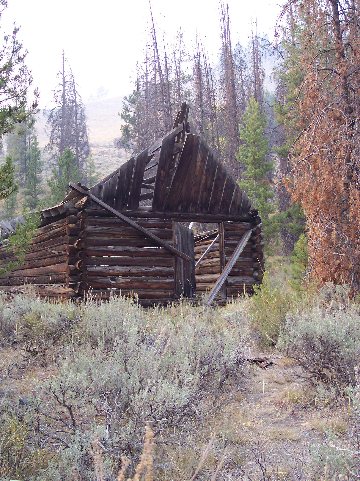 Some say that "gold is where you find it" and while that may be true, once you arrive at a known gold-bearing location, how do you decide where to dig first? Successful prospectors follow different methods, so there is no single "right" way, but no matter if you are sluicing, dry washing, or metal detecting, if you first consider the "lay of the land" you can better pinpoint a place to start.
Some say that "gold is where you find it" and while that may be true, once you arrive at a known gold-bearing location, how do you decide where to dig first? Successful prospectors follow different methods, so there is no single "right" way, but no matter if you are sluicing, dry washing, or metal detecting, if you first consider the "lay of the land" you can better pinpoint a place to start.
Natural Factors to Consider Before Digging for Gold:
- Types of Placer Deposits. Alluvial, residual, beach, and other types of placer gold are all worked differently. Alluvial gold forms in streams. The gold tends to concentrate on bedrock as it moves downstream and makes its way down through the gravel to bedrock. Residual placers form on the surface as rock materials weather and are washed or blown away and do not concentrate on bedrock. Knowing the type of placer makes a big difference as to where you should begin to look for it.
- Quartz Veins. Gold often forms with quartz, so quartz veining can be a very positive sign. Quartz is very resistant to weathering, so it may hang around on the surface long after any nuggets have sunk below the soil. If you find a visible quartz vein outcrop, that can be a good sign. The outcrop, as well as any areas downhill from it, should be sampled. Also remember that not all vein quartz is white. Some can be stained red-brown from iron.
- Iron Staining. Not all gold-bearing mineral deposits contain quartz. Gold-bearing veins can consist of calcite or mostly sulfides which often weather into iron-stained spots as the pyrites convert to iron oxides. While quartz is often a good indicator, it is not necessary for the formation of gold nuggets— but sulfur is necessary. In places where gold occurs with quartz, there is often a lot of iron, which was once (before it was oxidized) a sulfide such as pyrite. Any gold that was formed in these deposits is left in the red soils that remain, or perhaps nearby. The red soils can be deep orange or red-brown or brick red.
- Favorable Rocks. The type of rock considered "favorable" will vary greatly based on the area. The same "favorable" rock in California may not be the same "favorable" rock for finding gold in Alaska. In some places the best rock to look for might be schist or slate, in other places it might be volcanic. In general, sedimentary rock is usually not a favorable host rock for gold.
 Man-Made Factors to Consider Before Digging for Gold:
Man-Made Factors to Consider Before Digging for Gold:
The sites of small, old-time mining operations can be some of the best places to look for gold. After all, the old-timers didn't have the modern-day equipment that you have, so they left a lot behind. Depending on their age, these sites from yesteryear can be overgrown, but if you look for these indicators they will help you consider where to dig first:
- Ground Cuts. These are narrow trenches in the ground that carried the gravels to the sluice box.
- Rock Piles. Sometimes old-timers encountered rocks that were too large to pass through their sluices under the water pressure they had to work with, so bigger rocks were picked out by hand and tossed aside. Piles of rocks make an easy marker. Any quartz you find in rock piles should be checked with a metal detector— you might find a gold-quartz specimen that's worth a pretty penny. Rock piles can be visible in the desert as well. Although the old-timers were not sluicing in the desert, they used dry washers that had to be screened for coarse rocks. If you see a series of short rock piles a few feet in diameter that cover an area that seems to have been dug out, you can reasonably assume you have found an old dry wash site.
- Hydraulic Mine Workings. A sign that an area has been worked by hydraulic mining are the steep banks left behind when the gold ran out (or so they thought). These sites are also commonly marked by piles of big stacked rocks.
- Shafts. Miners sometimes dug deep shafts or adits to access gold veins. These working are usually easy to spot even today. If the dumps consist of rounded gravels, it is most likely from underground placer diggings. If the dumps contain angular broken rock, that would indicate blasting from lode mining.
Deciding where to dig first comes from knowledge. You get that knowledge from reading books and magazines dedicated to prospecting and metal detecting, talking with experienced old-timers, and GETTING OUT IN THE FIELD. Evaluate the area, think about the geology, and then make a plan before you dig. You may not always hit upon a promising location by considering the factors listed above, but your chances for success greatly increase. Be flexible, keep sampling, and try again if you don't have any luck at first. Spending a little time evaluating an area can lead to a much more productive hunt, because after all, "gold is where you find it."